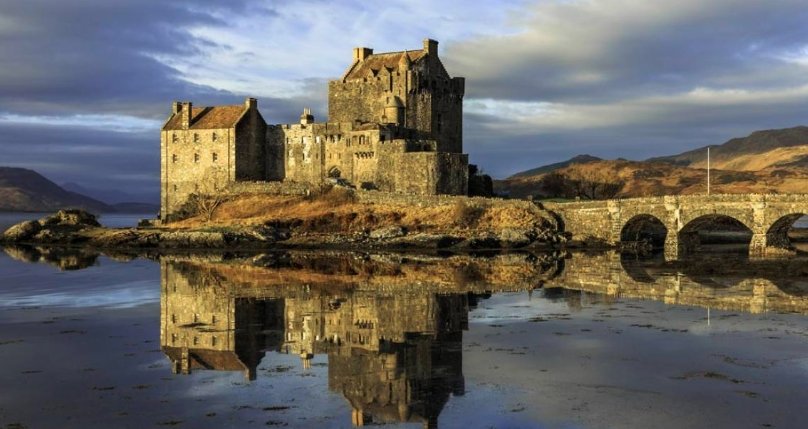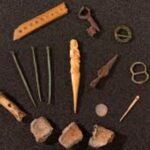Archaeologists unearthed a rare 13th century hair styling tool at Eilean Donan Castle in the Scottish Highlands during recent excavations. This gravoir, made from red deer antler, links remote Scottish communities to broader European grooming trends and reveals details about daily life in medieval times.
Uncovering the Gravoir
The gravoir is a thin pointed tool used to part hair and create elaborate styles popular among the elite in the 13th century. Experts from FAS Heritage found it while digging in the northwest tower of the castle, which sits on a small island where three sea lochs meet near the Isle of Skye.
This artifact stands out because it is the first gravoir ever discovered in Scotland and only the third known in the entire United Kingdom. Crafted from local red deer antler instead of the usual ivory, it shows how people adapted continental fashions to available resources.
The tool features a detailed carving of a hooded figure holding a book, hinting at cultural influences from across Europe. Such designs were common in France, where gravoirs first appeared, and spread to northern regions through trade and social exchanges.

Why This Find Matters
This discovery challenges old ideas about isolated Highland life. It proves that castle residents kept up with European trends in personal care, even in a remote spot built to guard against Viking raids in the early 1200s.
Historians now see Eilean Donan as more than a fortress or movie set from films like Highlander. The gravoir suggests inhabitants cared about appearance, using grooming to show status and connect with wider networks.
Recent digs highlight how medieval Scots balanced defense with culture. The artifact adds to growing evidence that personal grooming was key to social identity, much like today but with handmade tools from nature.
Other Treasures from the Site
Excavations turned up hundreds of items from the 13th and 14th centuries, now stored in about 80 boxes at the National Museums Collection Centre in Edinburgh. These finds paint a full picture of castle life, from work to play.
Among the highlights are metalworking tools like crucibles with traces of gold and silver, showing on site crafting of buckles and even swords. Brooches and dress pins point to attention to fashion, while bone game pieces and recycled pottery reveal family activities.
One standout is an iron jaw harp, a simple musical instrument held in the mouth to play tunes. It suggests evenings filled with music, perhaps during feasts or quiet moments away from battles.
Here is a list of key artifacts discovered:
- Brooches and dress pins for clothing
- Crucibles with gold and silver residues
- Carved bone game pieces for entertainment
- Pottery fragments from daily use
- Iron jaw harp for music
These items together form one of the UK’s top collections of medieval metalwork, offering clues to craftsmanship and leisure.
Table of Medieval Grooming Tools
To compare this find with others, consider how gravoirs fit into broader practices. The table below shows similarities and differences based on known examples.
| Tool Type | Material | Origin | Location Found | Key Feature |
|---|---|---|---|---|
| Gravoir | Red Deer Antler | Scotland (13th century) | Eilean Donan Castle | Hooded figure carving |
| Gravoir | Ivory | France (12th-13th century) | Various European sites | Pointed for parting hair |
| Comb | Bone or Antler | Northern Europe (Medieval) | Widespread in UK | Teeth for detangling |
This table underscores the uniqueness of the Scottish version while showing shared European roots.
Broader Links to Europe and Today
The gravoir ties Scotland to a continent wide trend where elite men and women styled hair into complex looks to signal wealth and refinement. In the 13th century, such tools moved from French courts to distant lands via pilgrims, merchants, and nobles.
This find echoes other recent discoveries, like ivory combs in England that show similar grooming habits. It also connects to modern interests in heritage, as Eilean Donan draws millions of visitors yearly, blending history with tourism.
Experts believe more digs could uncover even deeper ties, perhaps linking to trade routes that brought ideas and goods north. For now, the gravoir reminds us that medieval people valued looking good just as much as building strong defenses.
As we learn more about these hidden stories, it sparks curiosity about our own routines. Share your thoughts on medieval life in the comments below, and spread the word about this exciting find to keep the conversation going.


















